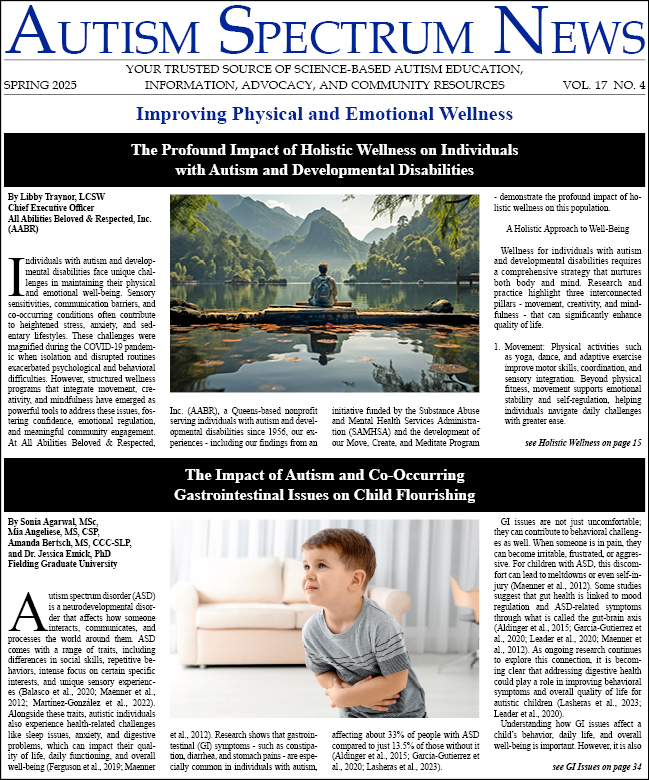-
Building Effective Autism Treatment Plans: A Collaborative and Compassionate Approach
“Treatment plan,” it’s a word one hears over and over again in the field of ABA. Treatment plans are fantastic in helping us guide programming for the clients and families we serve. Although treatment plans can often be received defensively by a client, parents, and other caregivers....
-
Breaking the Cycle of Food Selectivity: How MEAL PlanR Supports Autistic Children and Their Families
Limited and picking eating is a common occurrence for children with autism. Feeding challenges include food selectivity, food refusal, behavioral rigidity during meals, and limited dietary variety (Sharp et al., 2013). Upwards of 89% of autistic individuals have feeding difficulties (Cermak et al.,...
-
The InsideOut Program: Promoting Fitness and Friendship in College Students
Students Tackling Autism-Related Syndromes (STARS) is a non-profit 501(c)(3) that was founded by Kim Jameson, the parent of an autistic son, in 2015, at Christian Brothers University in Memphis, TN, to support students socially, academically, and pre-professionally. STARS is open to all students at...
-
Wellbeing Over Standardization: A Better Approach to Clinical Training
As autism care continues to evolve, one of the greatest challenges has been moving beyond a one-size-fits-all approach. Emotional wellness and overall wellbeing are deeply personal, varying from individual to individual, and any effective treatment must reflect this truth. Catalight Classroom is...
-
A Visual System Promotes Fitness, Self-Efficacy, and Independence for Adults with Autism
The rise in autism diagnoses is a well-documented phenomenon, yet the challenges faced by individuals with autism spectrum disorder (ASD) in achieving optimal health and fitness remain largely overlooked. Health disparities between those with and without autism are stark, with people on the...
-
The Role of Virtual Reality in Autism Therapy: Recent Advancements
Over the years, technology has improved to create a more immersive environment for users. One more popular trend in technology is the use of virtual reality (VR). Although typically used for gaming purposes, professionals have also found ways to utilize VR for therapeutic purposes. Initially, VR...
-
Project ImPACT: Empowering Parents with Evidence-Based Strategies for Early Autism Intervention
The prevalence of autism has increased dramatically over the last 20 years, with current estimates at 1 in 36 children having a diagnosis or special education classification of autism (CDC, 2023; ADDM surveillance network, 2023). The American Academy of Pediatrics (AAP) recommends that all children...
-
It’s Never Too Late to Communicate: Increasing Communication Access for Adults with Intellectual Disabilities and Autism
An estimated 5 million people in the United States are living with complex communication needs (CCN) (Beukelman & Light, 2020). This estimate includes people across all age groups and disability types who experience difficulties meeting their communication needs using only verbal speech....
-
Building a Healthcare Transition Program for Autistic Patients Entering Adulthood
The rise in the diagnoses of autism spectrum disorder in youth will mean a rise in the number of adolescents transitioning to adult medical care. 50,000 youth with autism are estimated to enter adulthood each year (Rast et al., 2020) with varying degrees of communication skills, adaptive...
-
Embracing Neurodiversity: A Social Revolution of Autism and New Perspectives
Over the past 25 years, I have noticed a movement that has been gaining momentum, aiming to reshape societal views and acceptance of autism and the broader community of individuals with intellectual and developmental disabilities (IDD). If I could name this movement, I would call it Embracing...





